
Subsequent to the initial construction, the Eyak River Boating Site (located off Copper River Road in Cordova, Alaska) required additional structural upgrades. AquaDams® were selected as the preferred system due to their environmental compliance as a cofferdam solution.

Workers have positioned the deadman AquaDam® at its designated starting bank and initiated the unpacking process. This particular unit is a double closed end (DCE) AquaDam®, measuring 4ft in height, 9ft in width when fully filled, and extending 90ft in length. AquaDams® are shipped rolled onto a wooden beam, similar to a carpet roll, encased in a protective covering and equipped with lifting ropes or straps to facilitate handling.
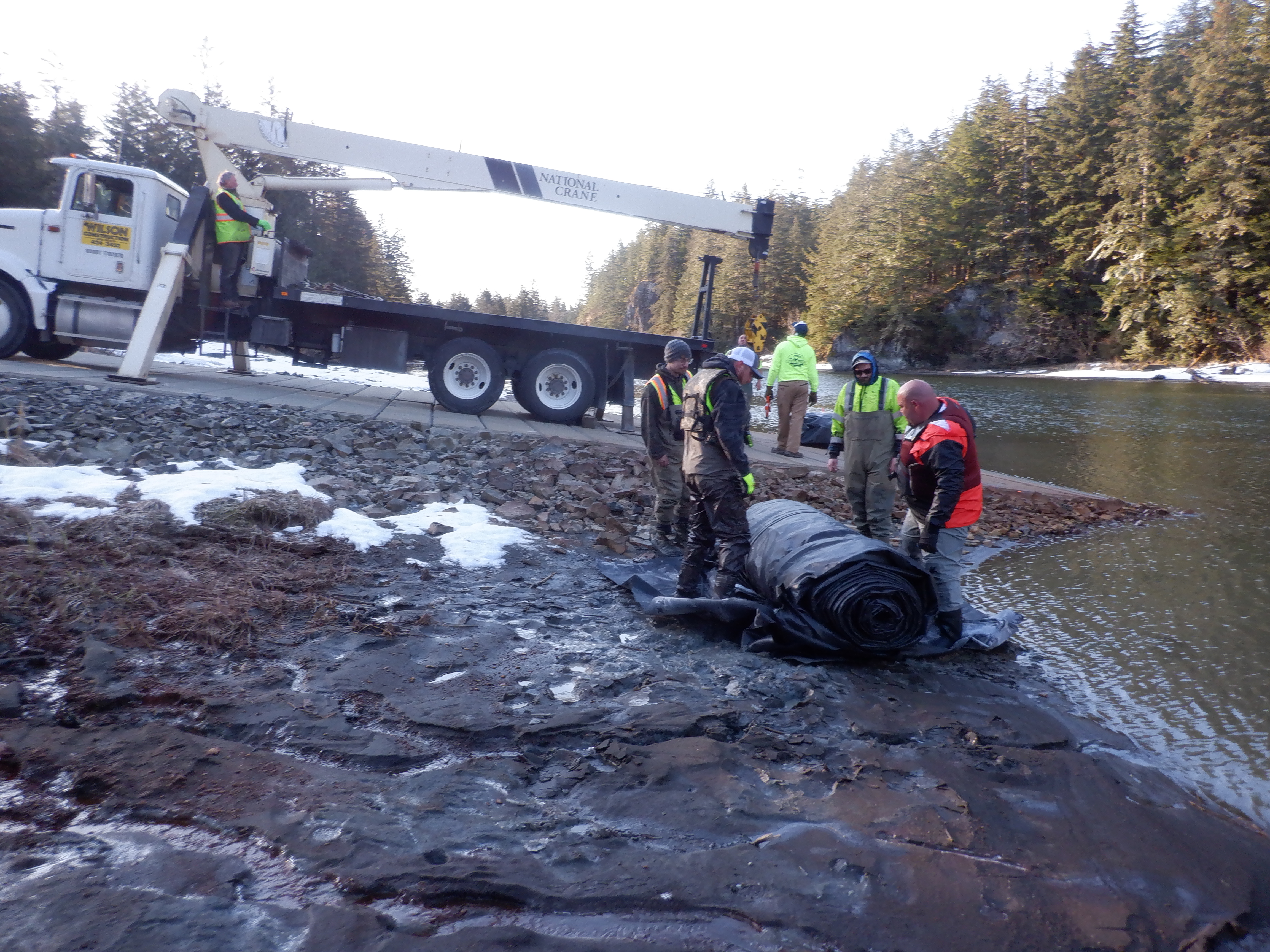
The crew must unroll about 20ft of length of the AquaDam® to expose the fill-tubes.
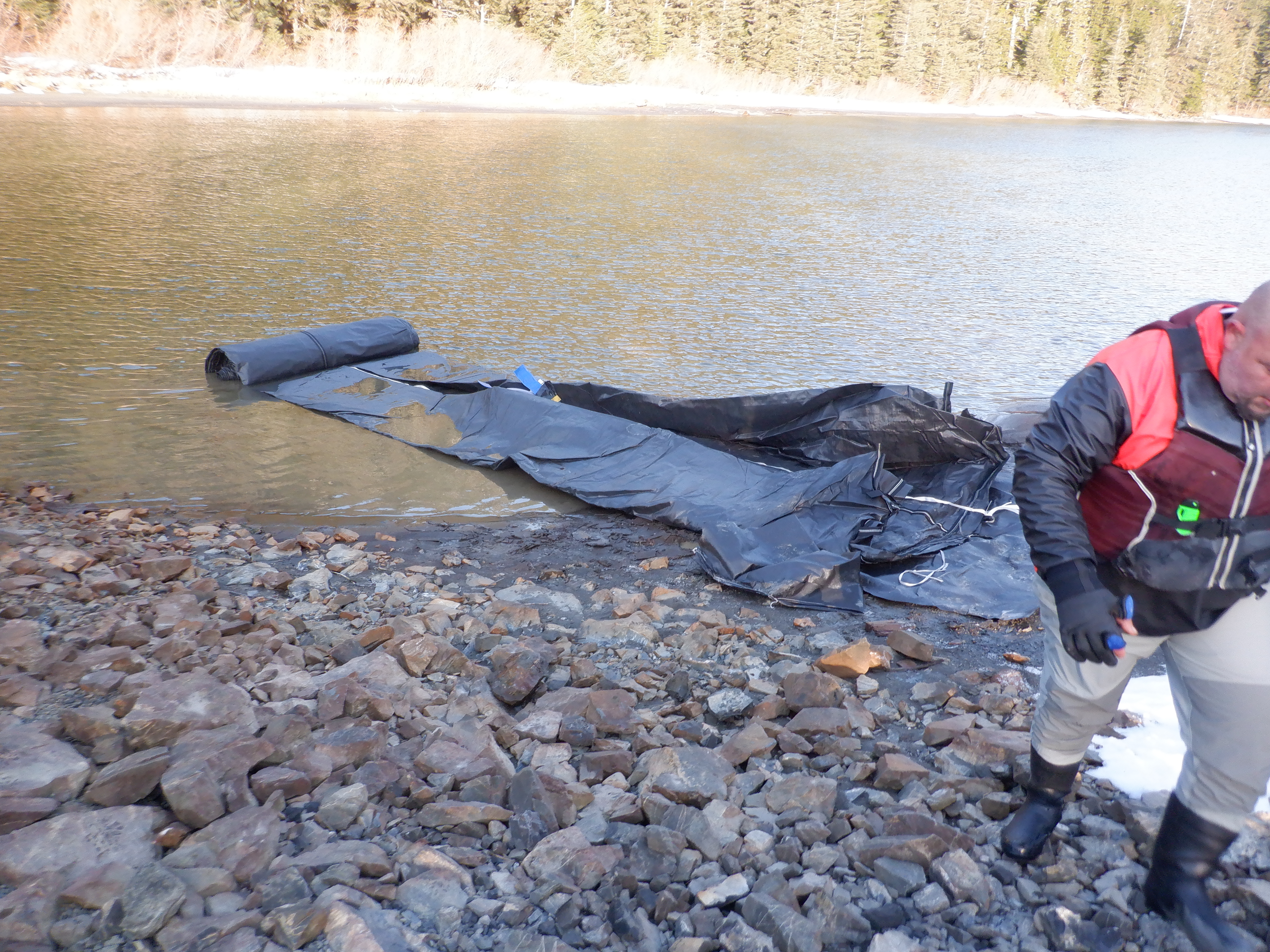
Sufficient length of the AquaDam® has been unrolled to fully expose the fill tubes. Note the visible blue discharge hose and the yellow Velcro securing the fill tube, which extends from the unrolled section.

The crew opted to convert the DCE AquaDam® into a single closed end (SCE) dam. To facilitate this, the sewn closure at the bank was opened, and the fill tubes, previously positioned atop the dam, were carefully extracted. This adjustment enabled the insertion of multiple discharge hoses of varying diameters into the fill tubes, allowing for flexible and efficient water filling operations.
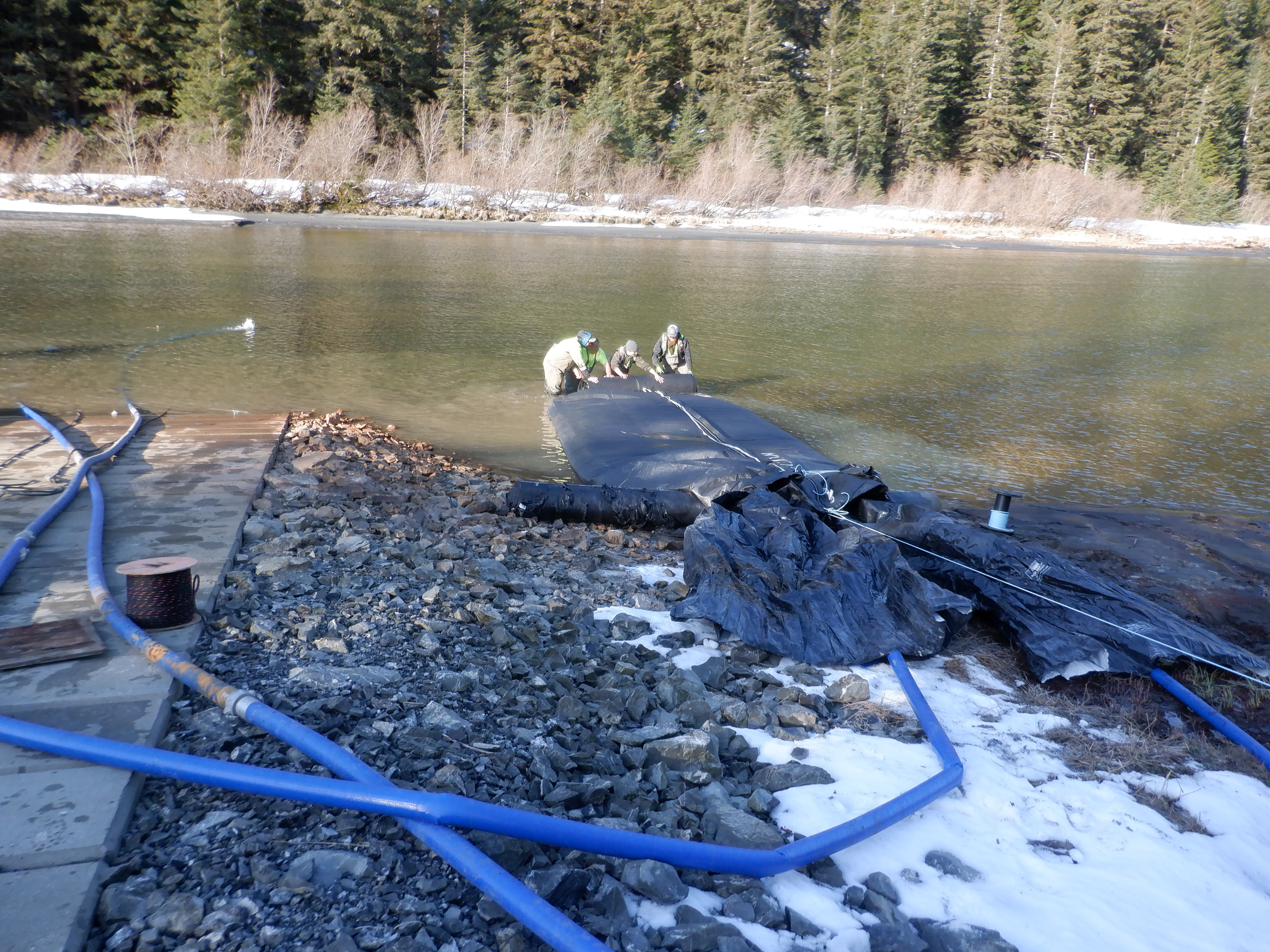
To secure the AquaDam® and prevent any displacement, the crew fastened the newly opened end to a shore-based anchor point. With the discharge hoses in place, pumps have been activated, and the first AquaDam® is now being filled with water drawn from the Eyak River.
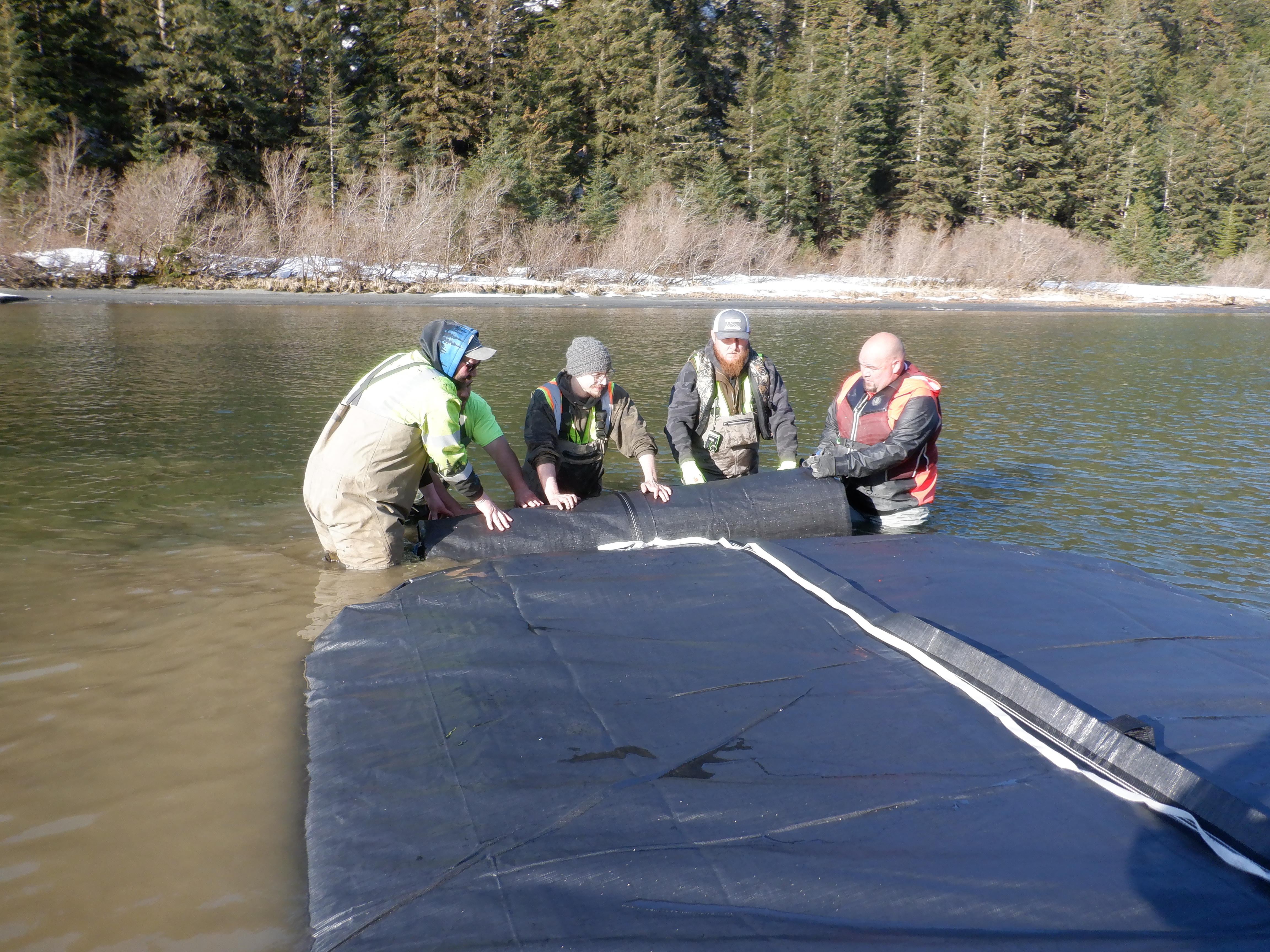
Crew members maintain control of the rolled end of the AquaDam® during the initial filling phase to allow the unrolled section to develop a hydraulic head above the surrounding water level. This head provides the necessary mass and stability to help anchor the structure in place as it fills. Once sufficient head pressure has been established, the crew gradually unrolls additional length, advancing the AquaDam® further into the body of water
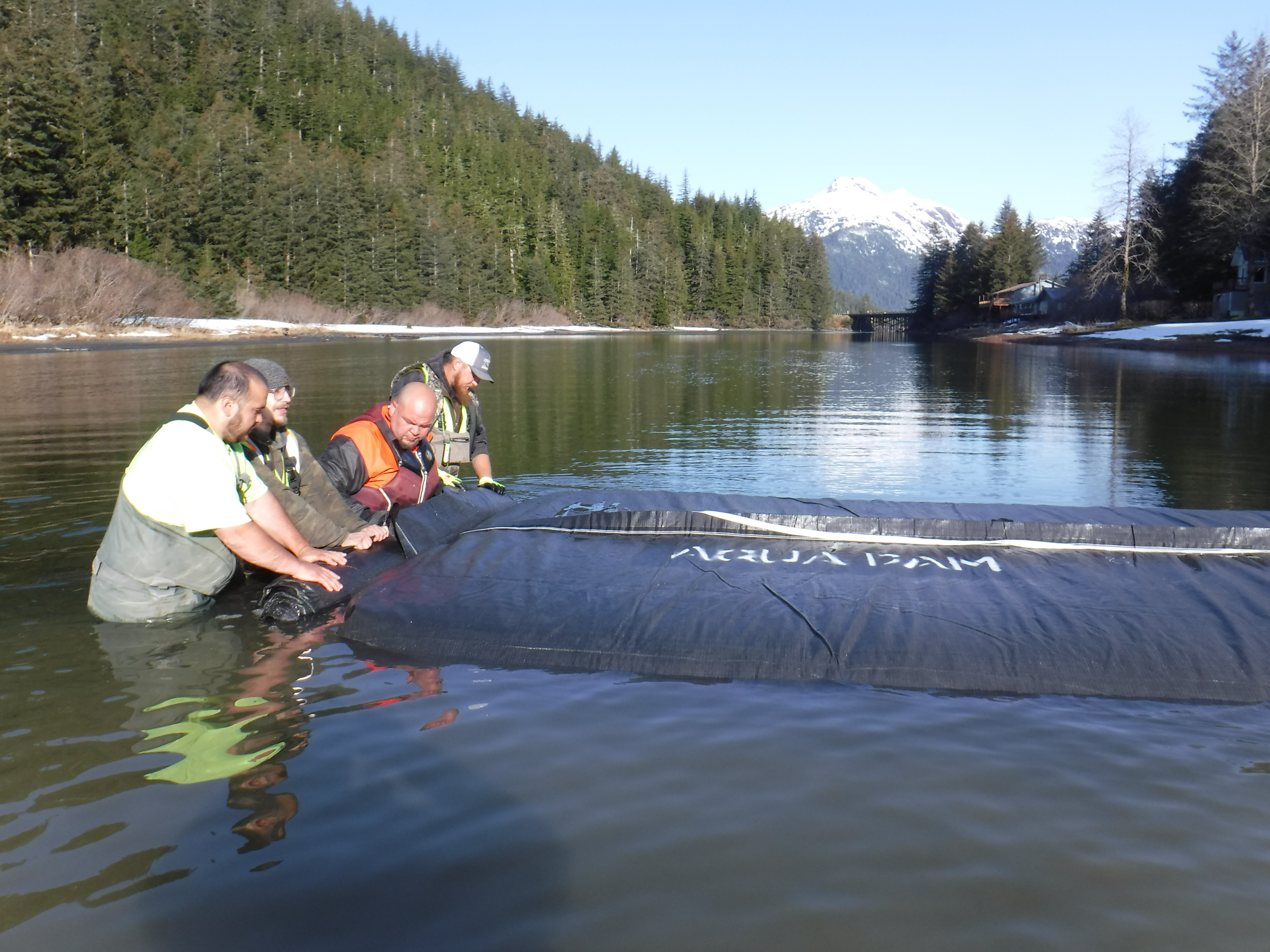
In flowing water conditions, it is essential to maintain hydraulic head within the body of the AquaDam® at all times to ensure stability and proper function. Constructed from lightweight, flexible materials, AquaDams® are buoyant when empty and can float in sufficiently deep water, underscoring the importance of controlled filling to anchor the structure effectively.
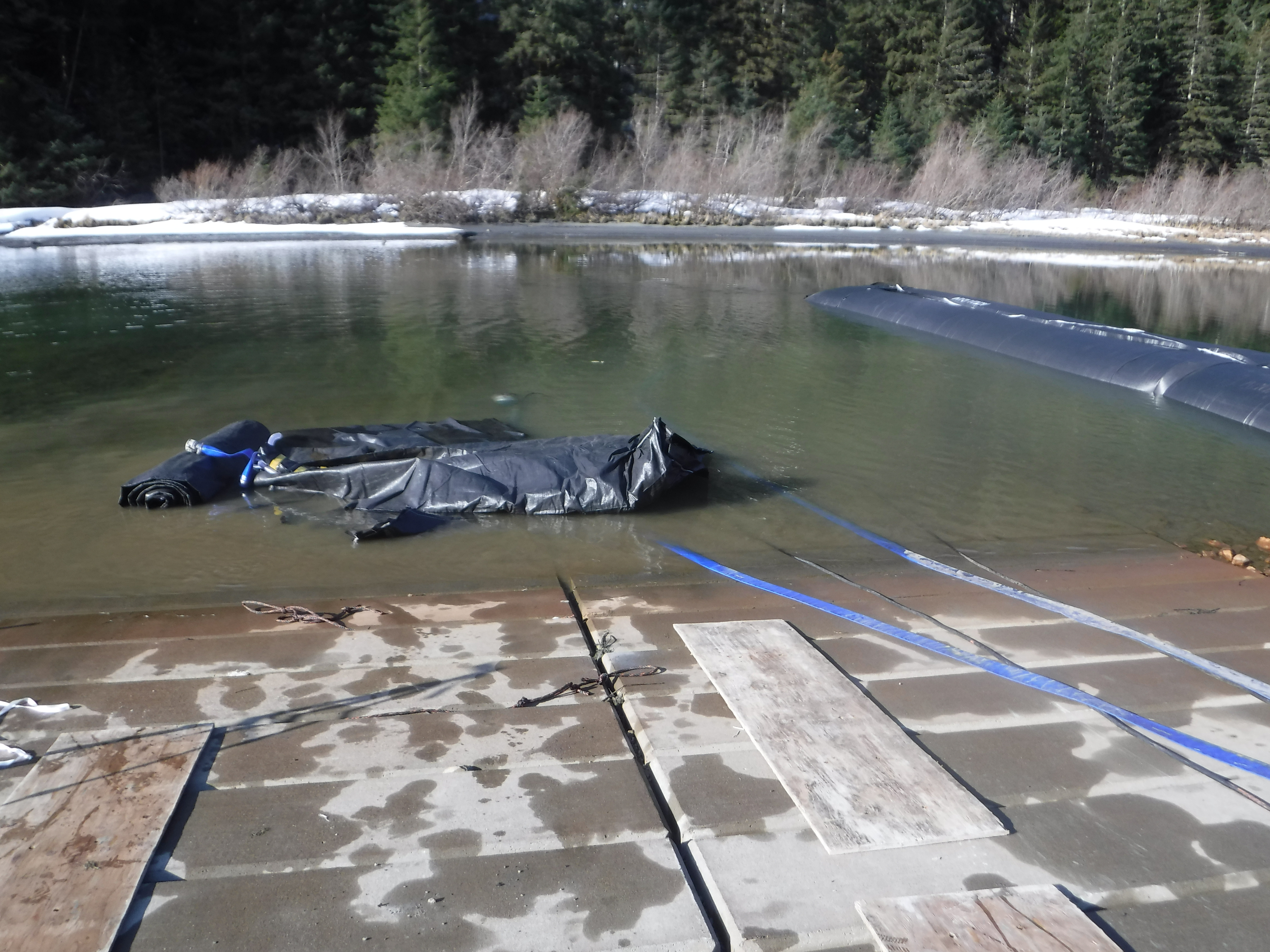
With the deadman AquaDam® successfully installed, the crew has now positioned a second 4ft tall DCE AquaDam® into the river. This unit is being installed at the closed end of the previously deployed dam. Aligned parallel to the river’s flow, it will be unrolled downstream and serve as structural support for the primary 8ft tall AquaDam®
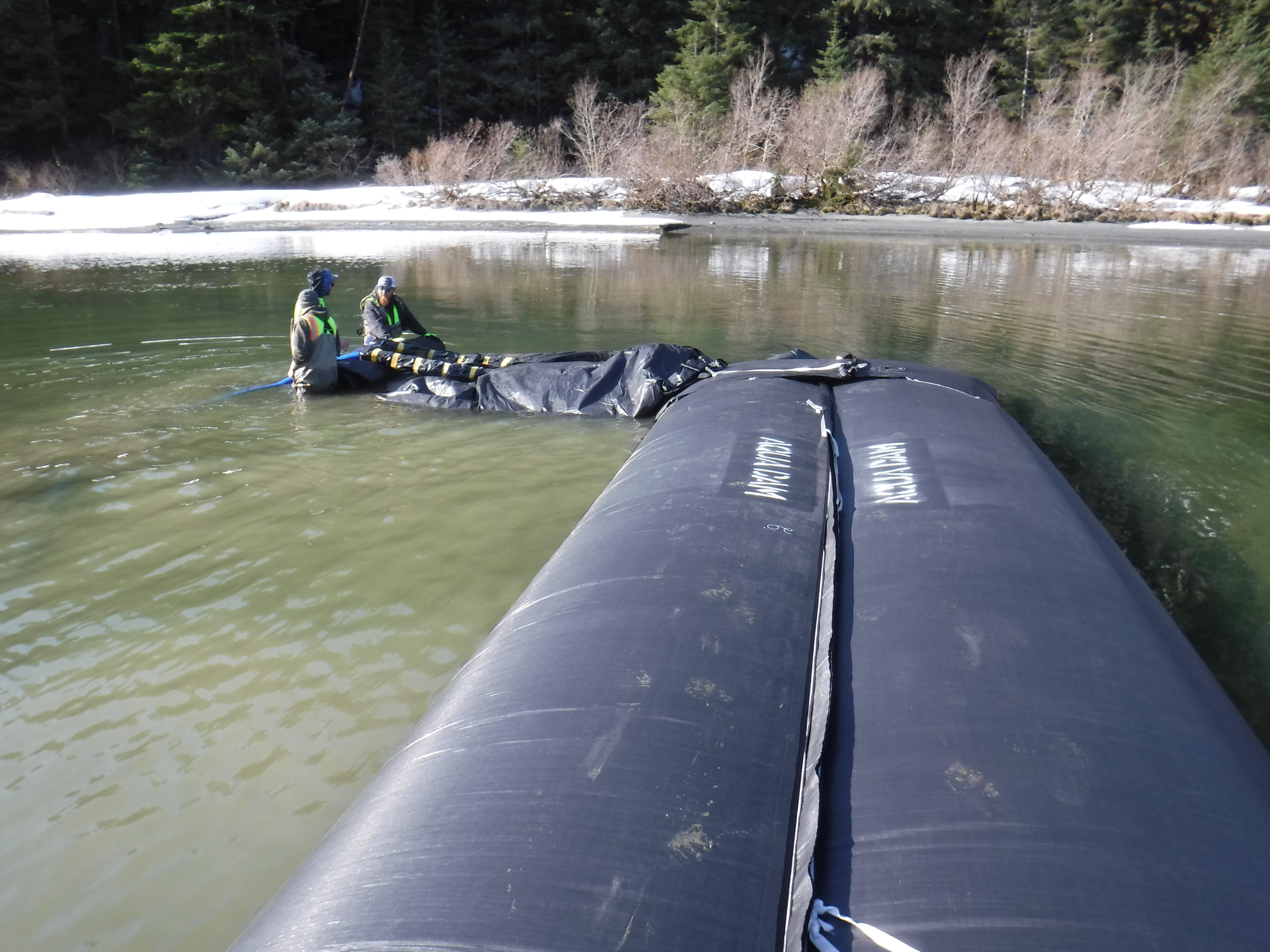
The crew has secured the second 4ft tall DCE AquaDam® to the first unit, connected the discharge hoses, and initiated the filling process. The fill-tubes are positioned atop the AquaDam® and oriented downstream.
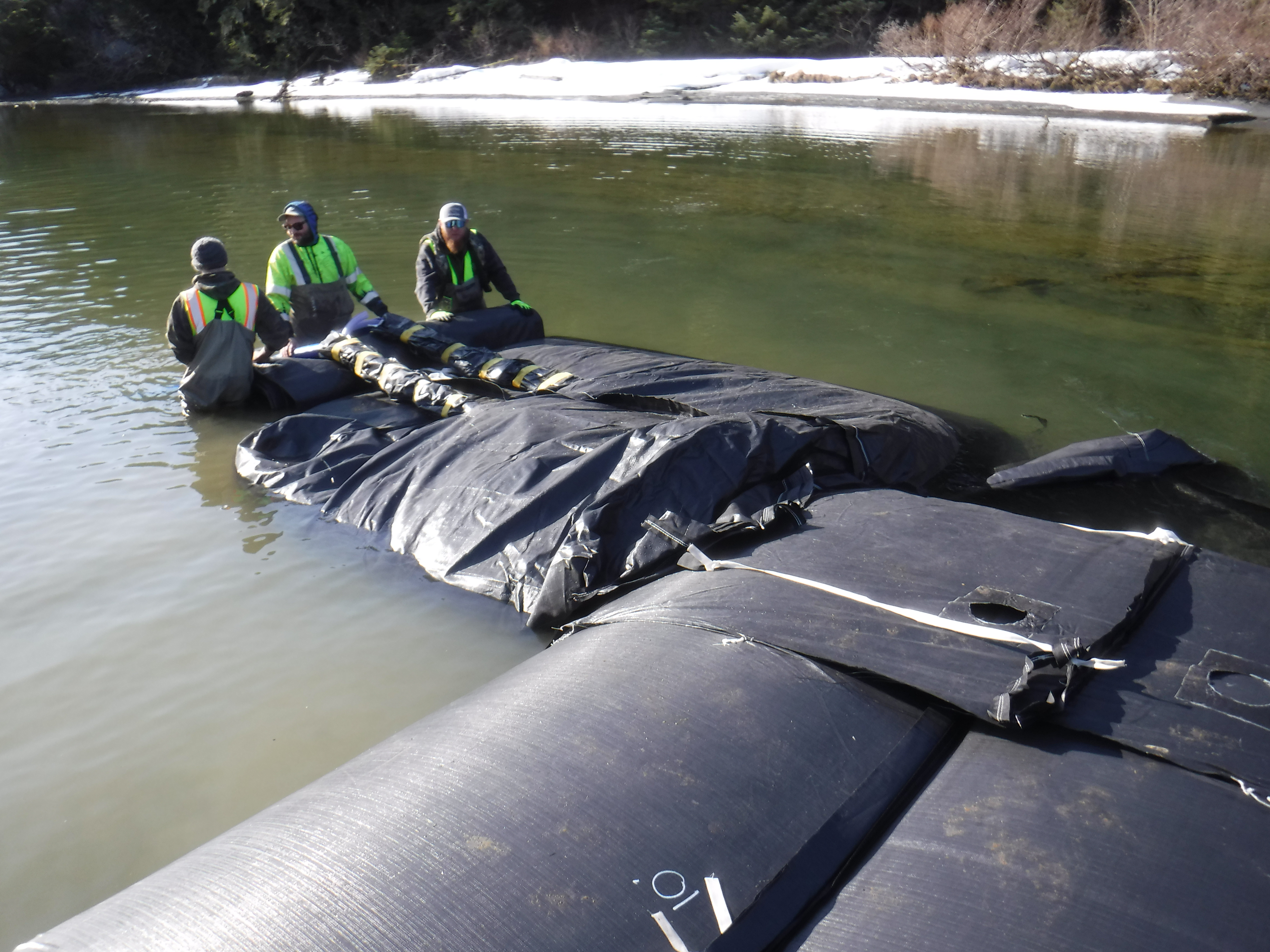
Crew members position themselves behind the rolled end of the AquaDam® to prevent premature unrolling, allowing the deployed section to develop sufficient hydraulic head as the unit fills.

The second 90ft long DCE AquaDam® has currently been unrolled to approximately 40ft. The rate at which the dam fills is directly influenced by the available pumping capacity. Each fill-tube requires a minimum of one dedicated pump to ensure efficient water intake. Standard DCE AquaDams® are typically equipped with 3in blue discharge hoses for water filling, along with a slightly smaller, more rigid hose designed to release air during the manufacturing process.

The crew is using two submersible 3in pumps to fill the second 4ft tall DCE AquaDam®. Filling an AquaDam® from the work-area side is not recommended, as it can create undesirable negative pressure once the area is enclosed.

Looking upstream towards Eyak Lake and Mari Smith Jones Bridge.
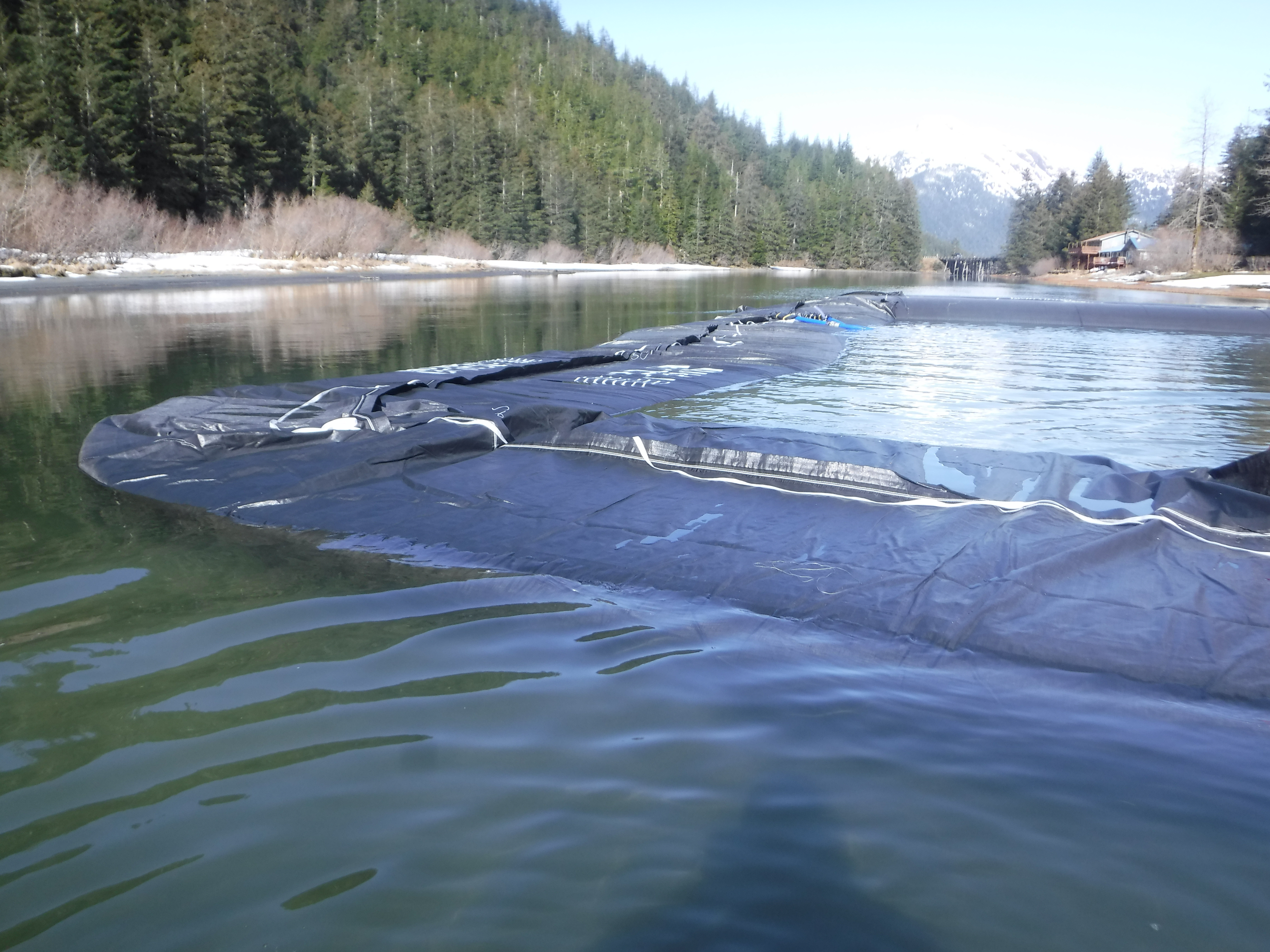
The final turn in the support/backup AquaDam® has been completed. Executing a turn requires temporarily slowing or halting the pump(s) connected to the fill tube located on the inside of the curve. Simultaneously, the crew manipulates the roll by pulling one side in one direction and the opposite side in the reverse direction, either manually or with ropes, to guide the dam into position. To accommodate the curvature, pleats must be formed in the material along the inside of the turn, aiding in proper alignment and structural integrity.
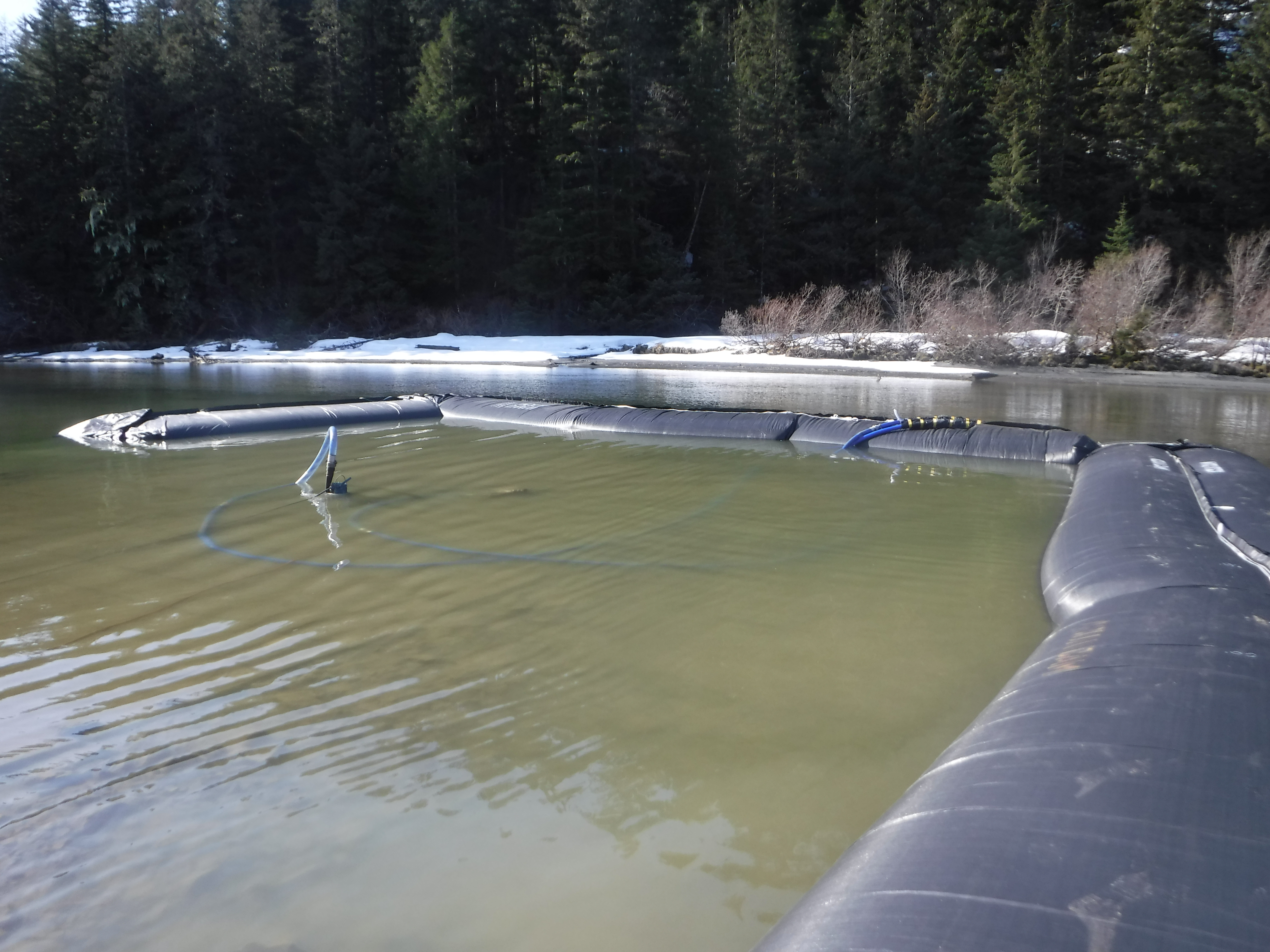
The second 4ft tall DCE AquaDam® unrolled into position and is almost full with water.
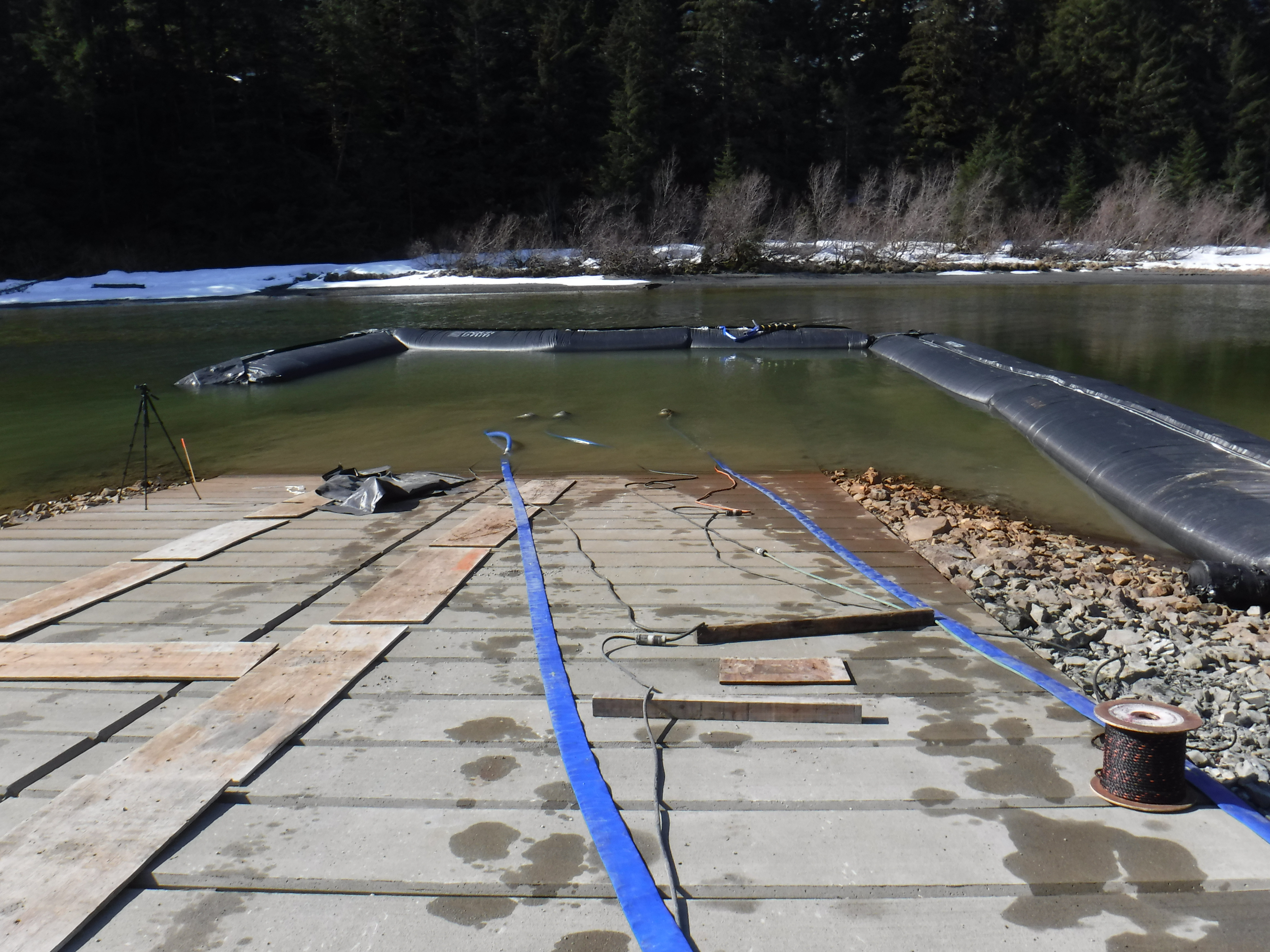
Both the deadman and support AquaDams® have been fully installed. The crew positioned them just outside the designated work area

The main 8ft tall, 17ft wide (when fully filled), 355ft long SCE AquaDam® has been positioned at its starting bank. Workers will next remove the lifting ropes and protective wrapping.

With the lifting ropes and protective wrapper removed, the crew has moved the open end and fill-tubes of the SCE AquaDam® up the bank to increase elevation at the intake point. This elevation is critical, as a SCE AquaDam® requires a starting bank that positions its open end and fill-tubes higher than the rest of the dam body. AquaDams® only achieve their full height at the lowest elevation along their installed path, making initial elevation control essential for optimal performance.
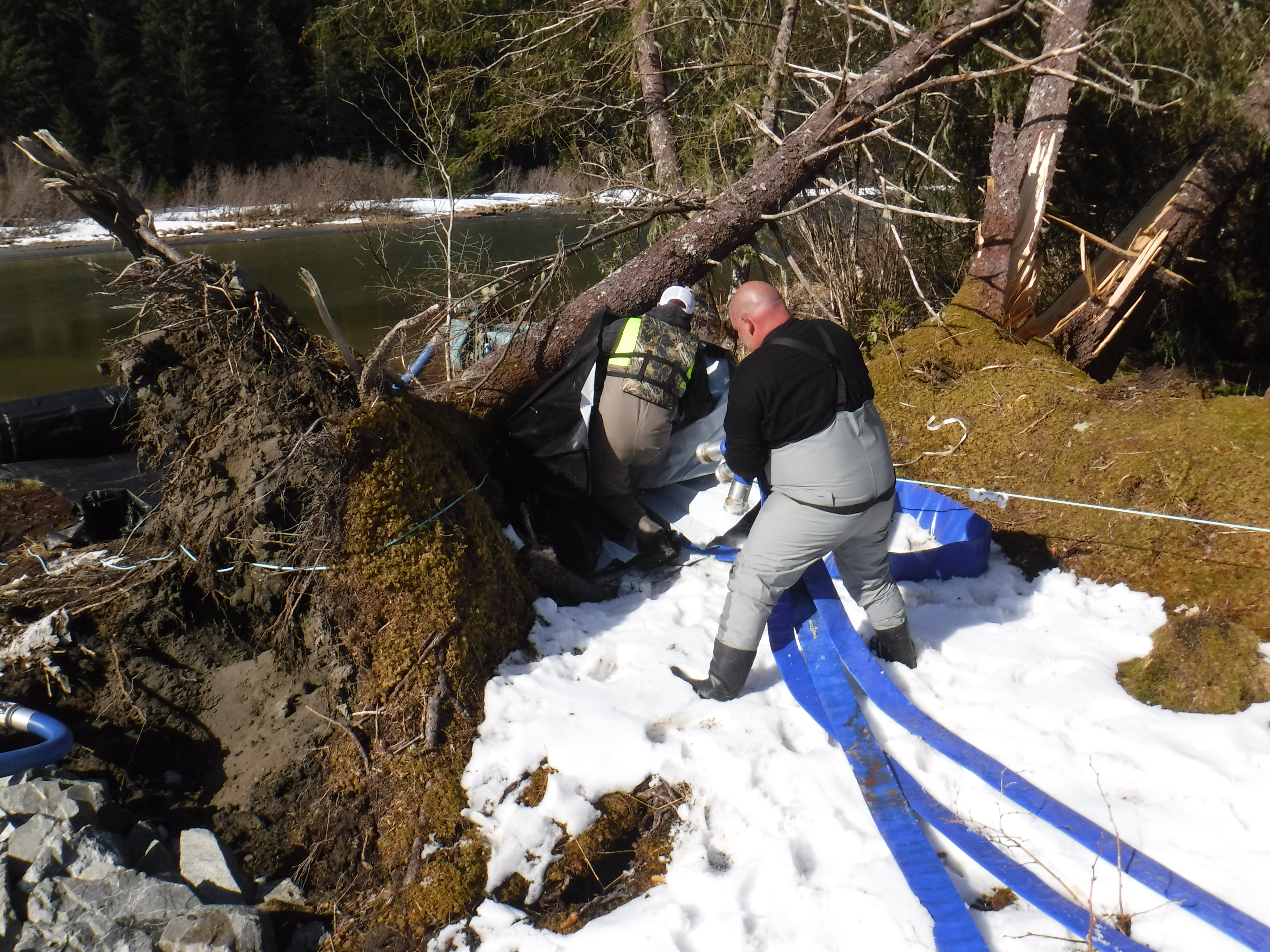
To ensure effective water retention during pumping, the crew must insert the blue discharge hoses into the AquaDam® fill-tubes at a sufficient depth down the bank. This placement helps maintain water inside the dam as it fills. For this operation, the crew selected three 3in pumps to supply one fill-tube and a single 6-in pump for the other. Prior to insertion, the metal fittings attached to all discharge hoses are removed to prevent damage to the fill-tubes.
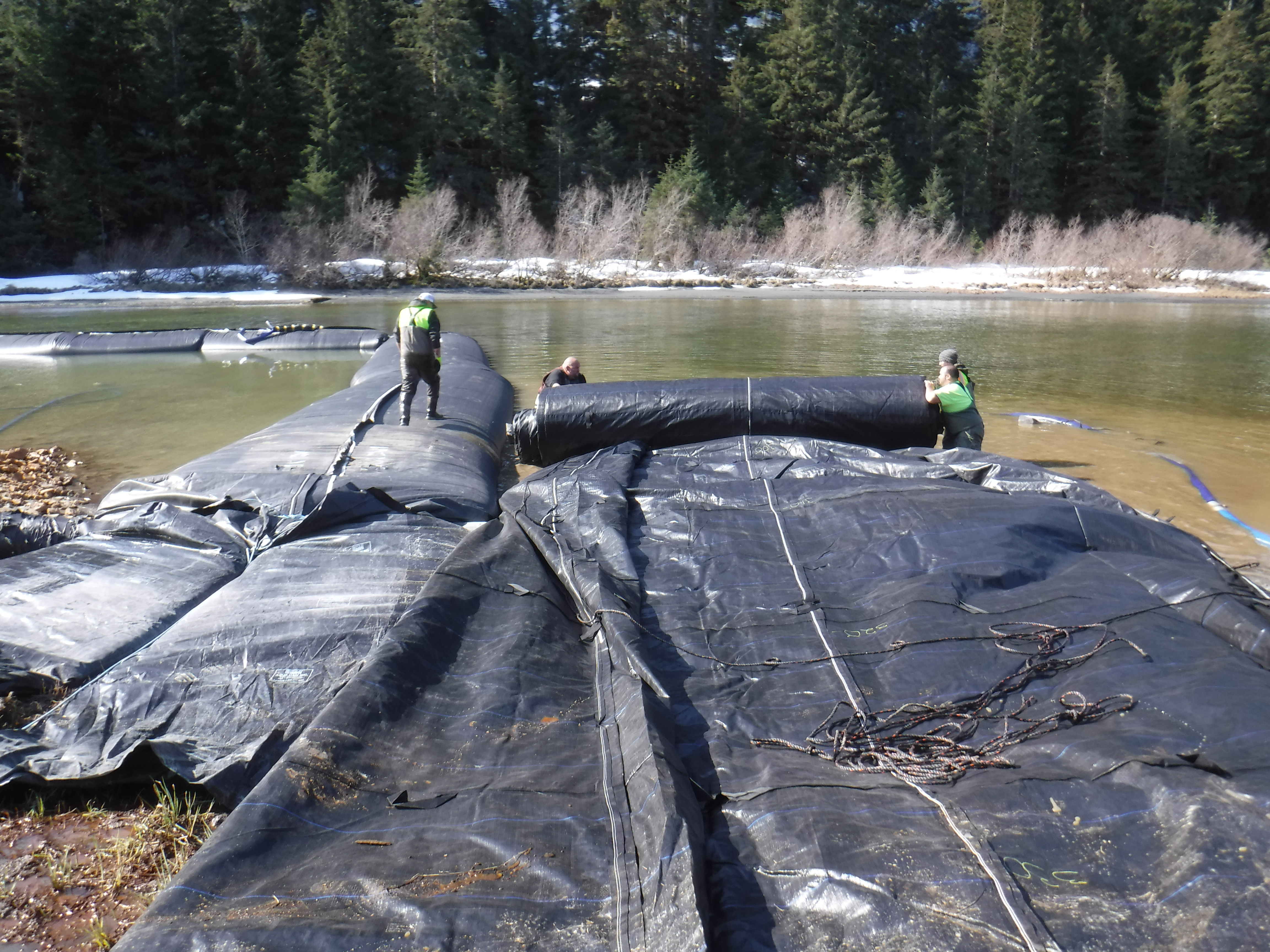
Eyak River water is currently being introduced into the 8ft SCE AquaDam®. The fundamental principle of hydrostatic head pressure is actively engaged, causing the water to seek the lowest elevation and exert the necessary force to facilitate the self-deployment and unwinding of the compacted barrier.

Workers are executing the first turn in the 8ft tall SCE AquaDam®. To facilitate the maneuver, they have shut off the pumps supplying the inner fill tube and begun manually adjusting the roll into position. This process requires coordinated effort to guide the dam along the desired path while maintaining structural integrity.

Ropes were secured to the bottom seam of the AquaDam® on the roll and anchored to integrated loops within the outer layer. This controlled tension mechanism is utilized to precisely regulate the unwinding of the barrier, ensuring the deployed section achieves the necessary hydrostatic head pressure before further material is released
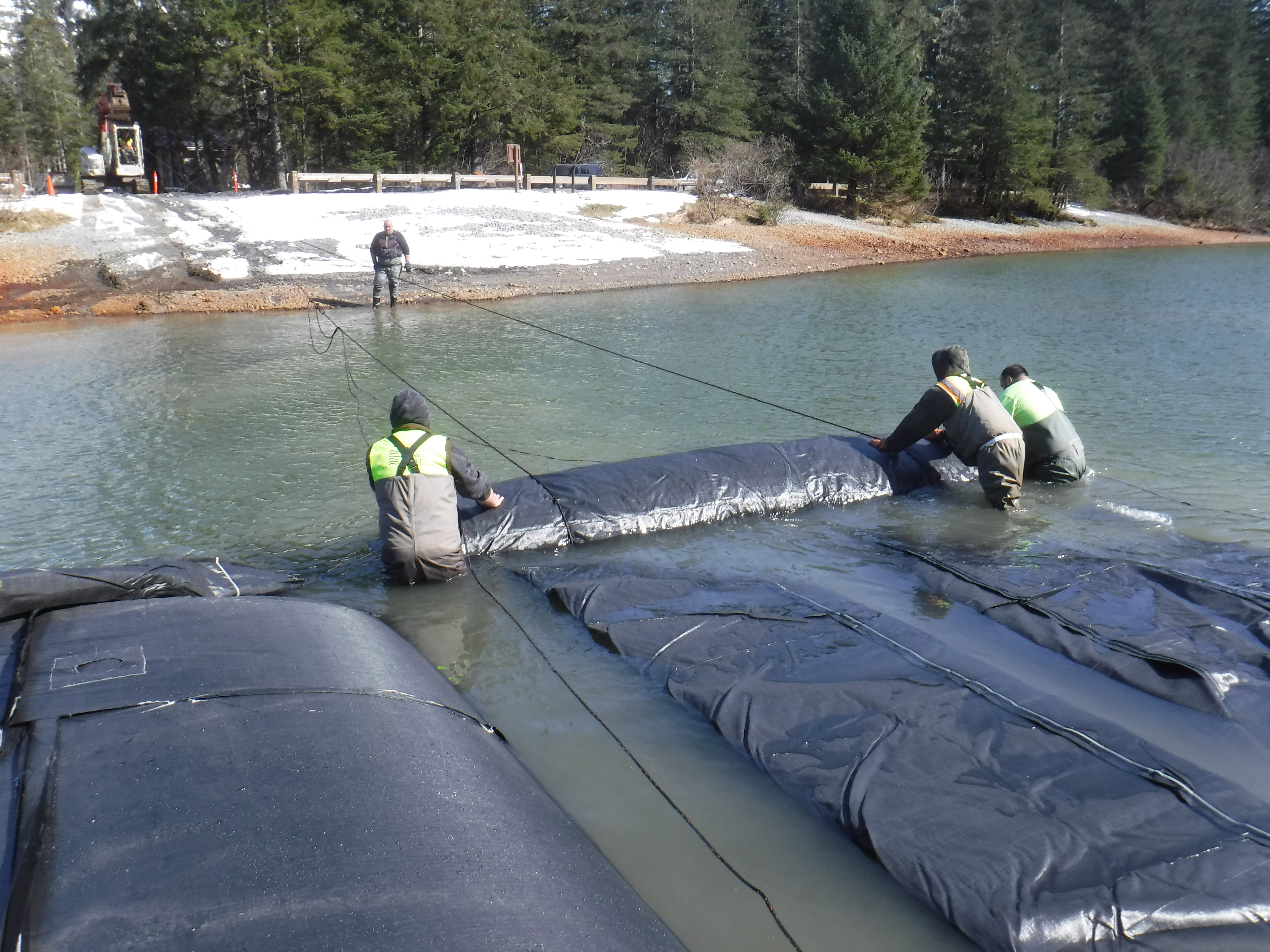
The 8ft tall SCE AquaDam® has completed its final turn back toward the shore, forming the U-shaped cofferdam configuration. Ensuring that a SCE AquaDam® starts and ends squarely at the banks is critical for proper performance.

The crew has temporarily secured the remaining roll end. This action stabilizes the barrier during the inflation sequence, ensuring the unrolled section of the 8ft SCE AquaDam® can achieve the required hydrostatic head pressure before final deployment.

The 355ft long SCE AquaDam® has successfully unrolled to its designated ending bank. The next step involves continuing pump operations to fill the dam to its full manufactured height, ensuring optimal containment and structural performance.
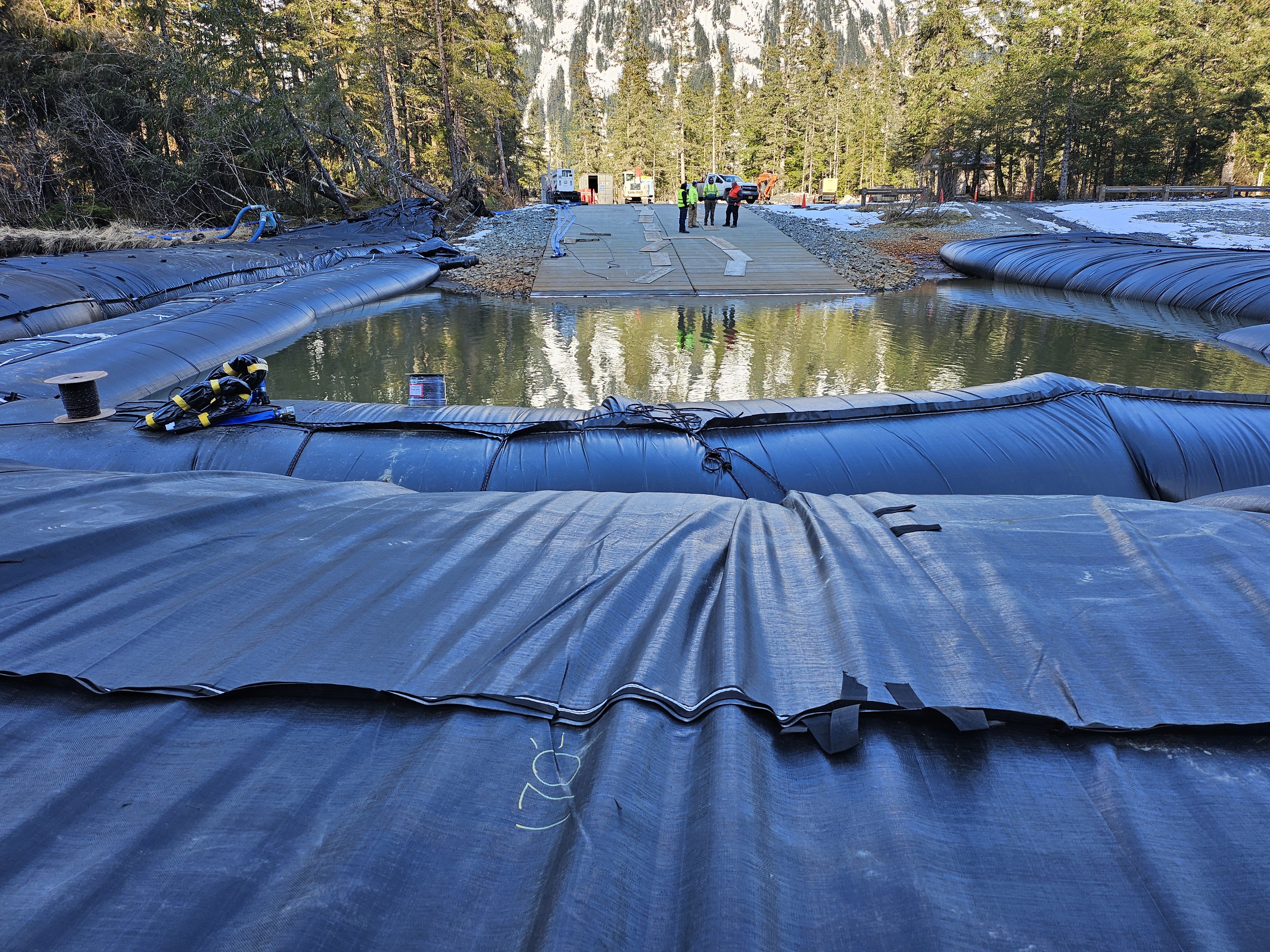
The cofferdam system is now fully functional, establishing complete isolation of the work area. The fill-tubes of the 4ft DCE AquaDam® have been secured on the left by folding to prevent passive water drainage and maintain internal pressure.

Upstream view toward Eyak Lake and the Mari Smith Jones Bridge following installation of the AquaDams®.

Fantastic job AquaDam!

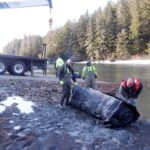
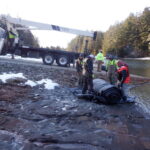
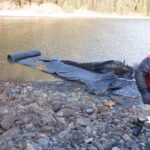
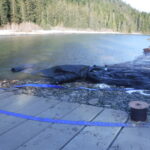
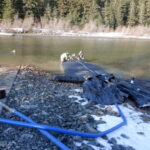
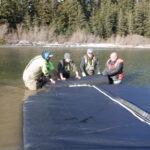
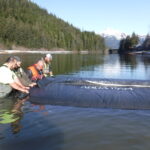

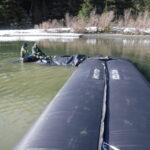
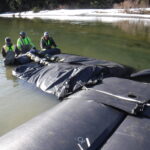
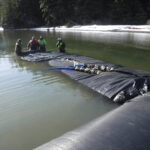
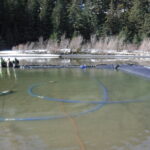
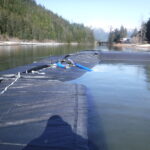
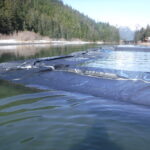

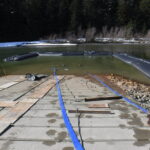
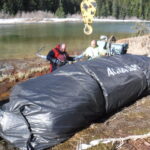


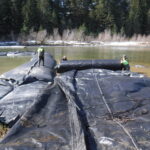

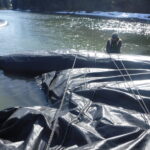
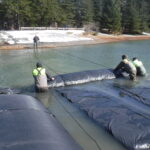
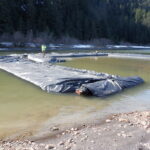


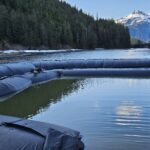
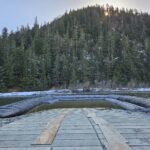
8ft Tall 17ft Wide (fully filled) 355ft Long Single Closed End (SCE) AquaDam®, Deadman/Support AquaDams®, Eyak River, The Eyak River Boating Site, River Diversion, Horseshoe/”U” Shape Configuration
